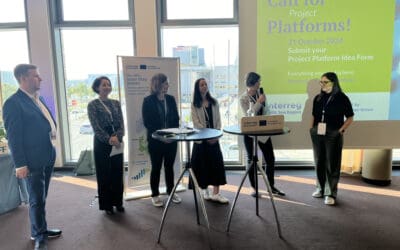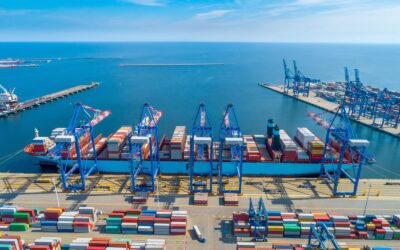On 8 May Germany hit a record high number of 87,6 % of national electricity generated from renewable resources. Even though Germany and other countries around the Baltic Sea are doing well in renewable energy production, there is still a lot left to do in terms of installing renewable energy facilities In order to meet the EU energy goals by 2030. But spatial planners often face difficulties when trying to designate the best suitable areas for setting up renewable energy infrastructure. Conflicts often arise and now a number of energy agencies, spatial planning authorities and regional administrations from around the Baltic Sea are now tackling this common challenge in the project “Baltic energy areas – a planning perspective” (BEA-APP).
“The conflicts that arise when installing more renewable energy capacities differ between countries”, says Gabriele Hoffmann. She represents Mecklenburg-Vorpommern as the initiator and lead partner of the project and works at the Ministry of Energy, Infrastructure and State Development of Mecklenburg-Vorpommern in north-eastern Germany.
No wind mills in my backyard
In Mecklenburg-Vorpommern, it is wind mills that create the biggest conflicts, Gabriele Hoffmann explains. In many areas suitable for wind energy production, the authorities struggle with the so-called NIMBY effect: Not in my backyard is the prevailing attitude of people living near potential wind farm areas. “In Mecklenburg-Vorpommern, we have a well organised structure of citizen initiatives who override the designation of wind energy areas in a professional manner and with the help of specialised lawyers on both municipal and Länder level,” she states. The citizens often bring forward noise pollution and loss of aesthetic value of the landscape. And: they do not see any benefits, in trems of new jobs for instance, of the wind farms for their home regions as wind mills are often installed by companies from far away.
Citizens and municipalities need to gain
The regional government has reacted to these problems. In April 2016, the Landtag of Mecklenburg-Vorpommern passed a new law on “Participation of citizens and municipalities”. The law obliges anyone planning a new wind farm to establish an enterprise and to offer at least 20 % of its shares to the immediate neighbours, i.e. local residents and municipal administrations. In this manner, the government hopes to raise the benefits for and thus the acceptance of local residents.
Many conflicts to be solved
Gabriele Hoffmann observes in how far the new law eases the conflicts and helps to make the energy transition a success. “At the same time”, she says, “we hope to get more ideas from other regions around the Baltic Sea which we can transfer.” In other regions problems are different: Near the coasts, the tourism sector counteracts offshore wind farms. And close to military areas, wind farms cannot be set up within certain corridors because the wind mills interfere with microwave transmission used for military communication.
Solutions for others to learn from
“Our aim in the project is to identify and describe different conflicts related to planning of renewable energy facilities – as a first step. Then we want to compare them and identify suitable solutions”, Gabriele Hoffmann explains. And she is confident: “The regions can learn a great deal from each other, especially when they exchange across borders.”
Effects for the whole Baltic Sea Region
Beyond this level of knowledge exchange, the project attempts to create a durable change by strengthening spatial planning in Europe in general. BEA-APP is a flagship of the EU Strategy for the Baltic Sea Region. As such, it strives to derive from the comparative studies of conflicts and solutions a generalised recommendation on how to increase the use of renewable energy by using planning tools properly.
A strong player to manifest change
A suitable way to bring such recommendations into use, is to introduce the recommendations to the Conference of Ministers responsible for spatial planning in the Baltic Sea Region. These ministers are organised in the transnational institution VASAB, Visions and Strategies around the Baltic Sea. VASAB is coordinating the Horizontal Action Spatial Planning in the EU Strategy of the Baltic Sea Region and a member of the projects’ steering committee.
“This project is something new”, emphasises Talis Linkaits, Head of the VASAB Secretariat. “It has the potential to really increase the use of renewable energy in the Baltic Sea Region.”
Related links
» BEA-APP Project summary
» Ministry of Energy, Infrastructure and State Development of Mecklenburg-Vorpommern
Related news
15 Jul 2019
Coherent planning of shipping and offshore energy across borders with Baltic LINes
11 Jun 2018
Rethinking energy in the Baltic Sea region







